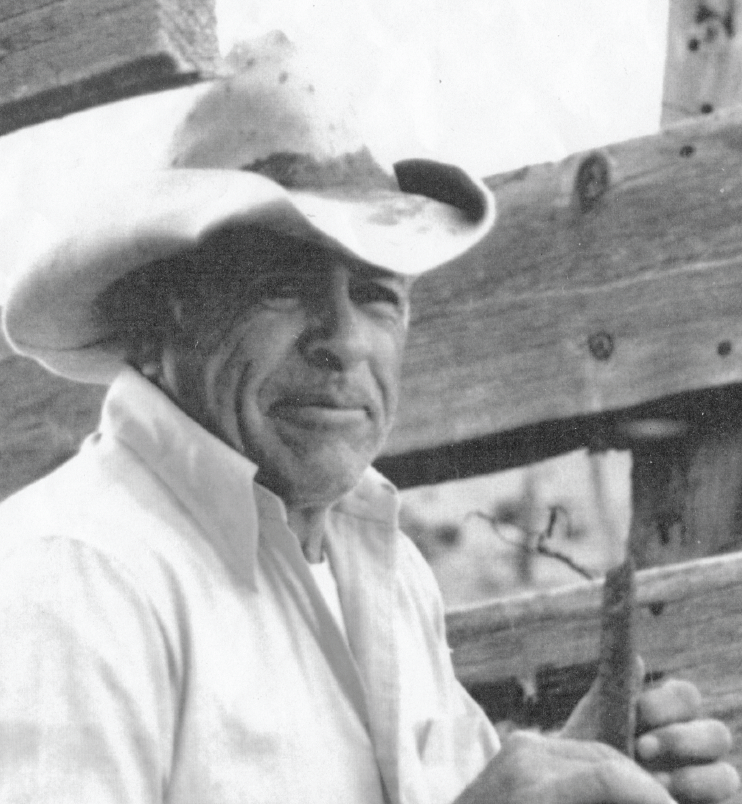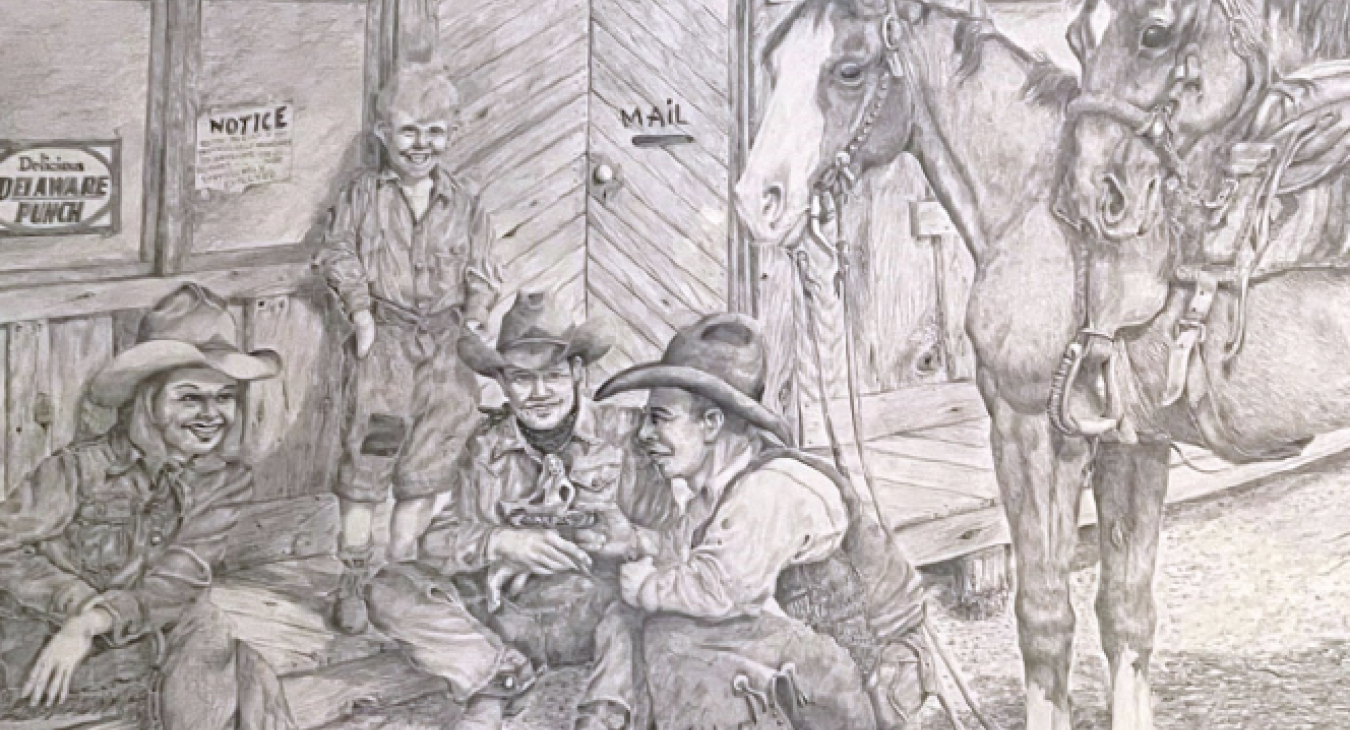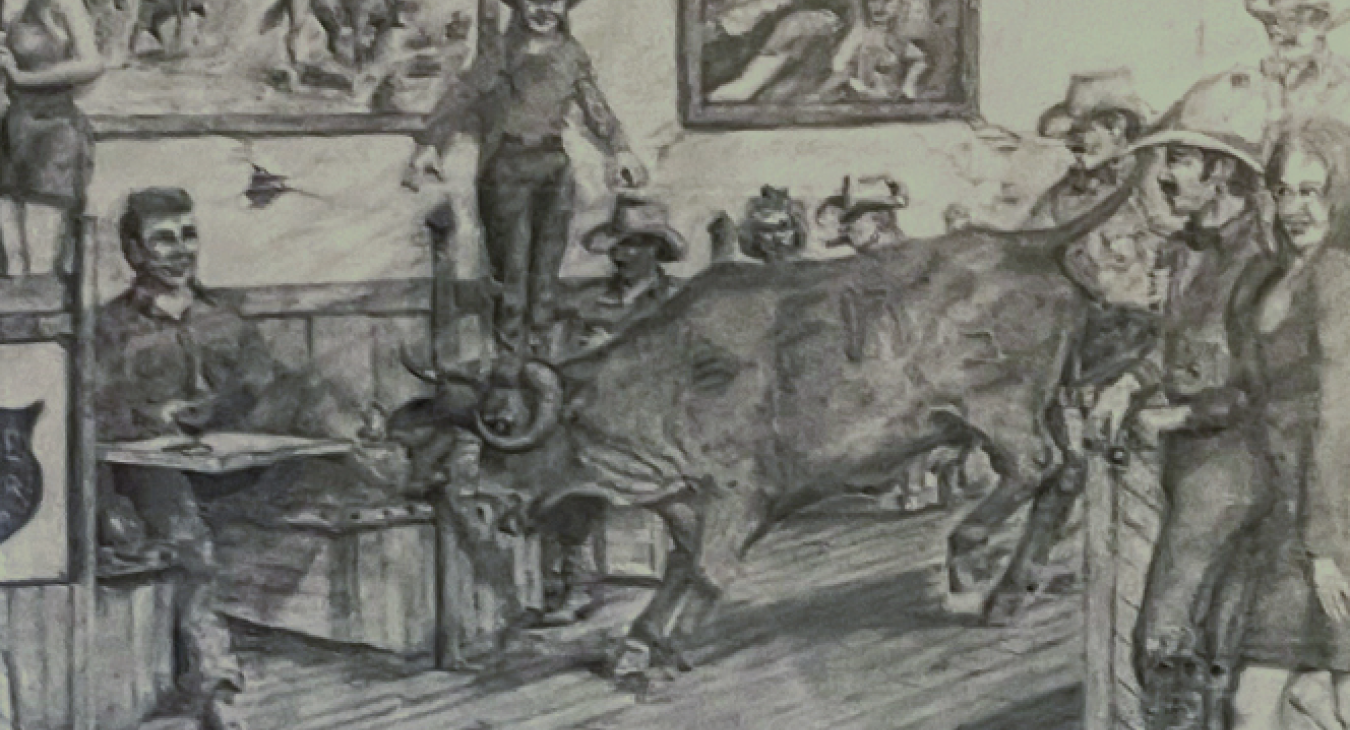Legacy of cowboy artist Joe J. Brazil lives on
By Dixie Boyle
Cowboy artist Jose Joaquin Brazil—better known as Joe J.—was a prolific artist of ranch life and a great storyteller and historian. His work, drawn almost a century ago, captured snapshots of real-life events and well-known characters from the past.
Joe J. doodled on napkins while having lunch with friends and gave the drawings to those who wanted them. He painted murals on the walls of the homes he renovated, created delightful images for Christmas cards each holiday season and made his own postcards with short messages for special friends. He often gave away his artwork.
The artist , known for his cowboy scenes , was born and raised on a ranch near the ghost town of Scholle—west of Mountainair—along Highway 60. Joe J. became an accomplished and well-known artist of Western history.
Joe J. drew images that related stories about his neighbors, friends and acquaintances. “Incident in Magdalena” tells the story of his neighbor, Wade Steele, who served as the local brand inspector. He traveled to Magdalena one afternoon to give a rancher a brand inspection slip so he could sell a cow at an auction in Albuquerque.
The two met at the Golden Spur Saloon and, after the transaction, decided to share a beer. The beer drinking continued longer than planned, and because it was too late to make it to the auction in Albuquerque, the two decided to hold the auction right in the saloon.
Another drawing, “Goodbye Bloomers,” is about an unruly bovine near Scholle in 1939. A rancher named JoBob ran a cow straight through his wife’s fresh laundry one morning. The old cow had not calved in four years, and JoBob was determined to get rid of her. The cow was just as determined to stay on the ranch.
Joe J. composed many drawings about his hometown of Scholle. The town began as a railroad town and shipping point for livestock. When Joe J. was younger, Scholle had a post office, railroad depot, grocery stores and one of the most frequented dance halls in the region. People came from as far away as Socorro to dance on a Saturday night. Scholle’s population began to dwindle in the 1940s .
The artist’s best-known drawing of the town is named “Lunch at Scholle.” The illustration shows a cowgirl named Trixie Tolliver, who had ridden her horse into town one morning to check the mail. She encountered two acquaintances named JoBob and Leon. They were in town to trail 12 registered Hereford bulls waiting in the nearby shipping pens back to the ranch. They decide to share lunch on the post office steps while Troy Twain looks on.
Joe J. served in the Army Air Corps in the South Pacific during World War II. He made enough money drawing portraits of his companions and painting images on B-24 bomber planes to start his first cattle herd after the war when he returned home to Scholle.
In addition to ranching and his artwork, he was an excellent carpenter and built many homes in Mountainair. In 1949, Joe J. married Marjorie Price, and they raised four children.
By the 1980s, Mountainair’s Shaffer Hotel had become rundown and desperately needed restoration work. Joe J. and his friend , Harding Kayser , completed the first significant renovation of the hotel since its construction. The two started on the first floor and sought grants and donations to cover the restoration work. They were able to slowly put life back into the old hotel that was part of the town’s boom years.
Joe J. was active on the Torrance County Fair Board for years and served as its president. He was a charter member of the Mountainair Heritage Foundation and was awarded a Heritage Preservation Award from the state of New Mexico for inspiring the cowboy way of life.
Joe J. died at 82 in 2006 at his home in Scholle. Hundreds of his images live in museums, courthouses, grocery stores, bars, government offices and homes throughout the state.



